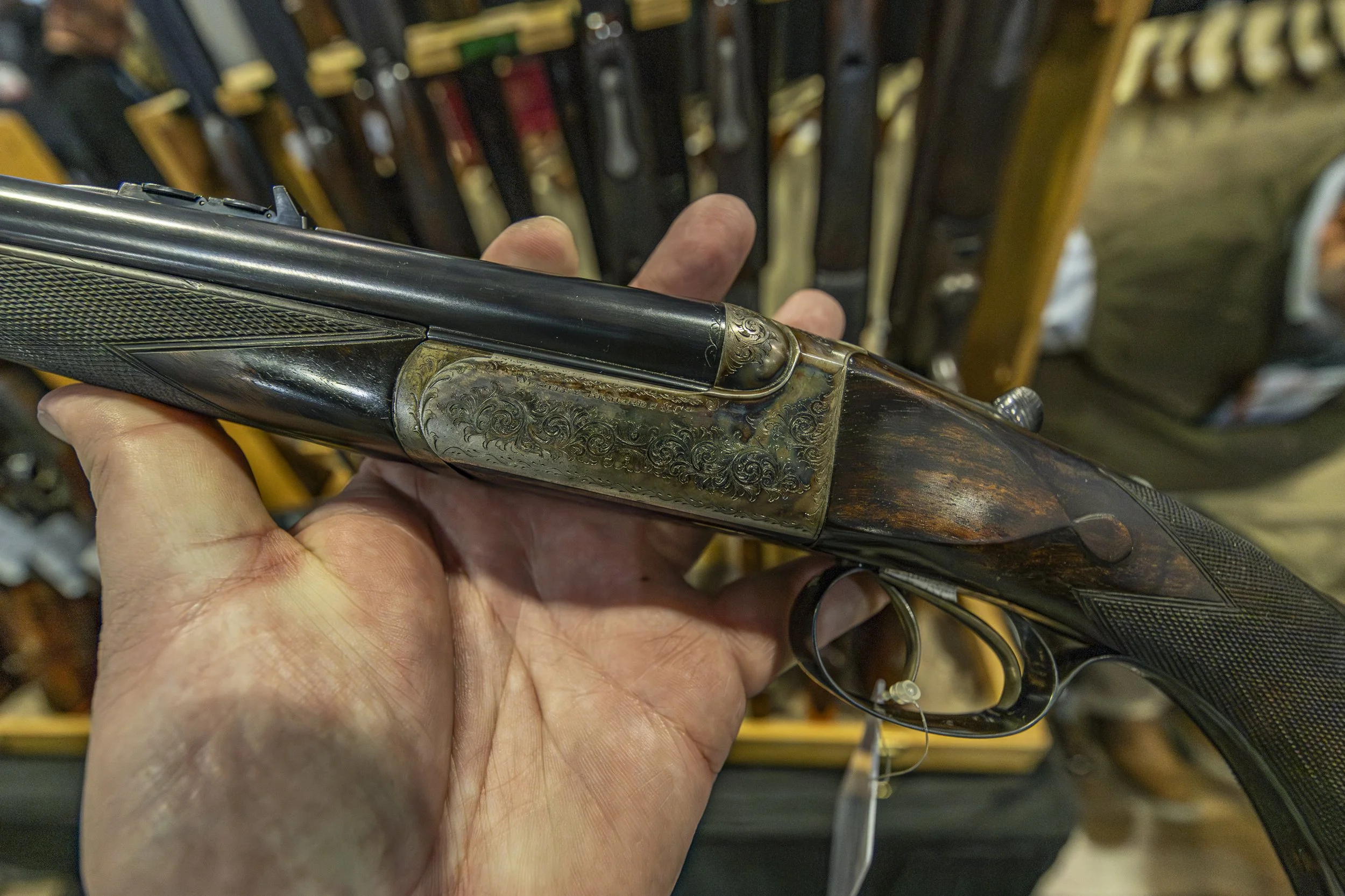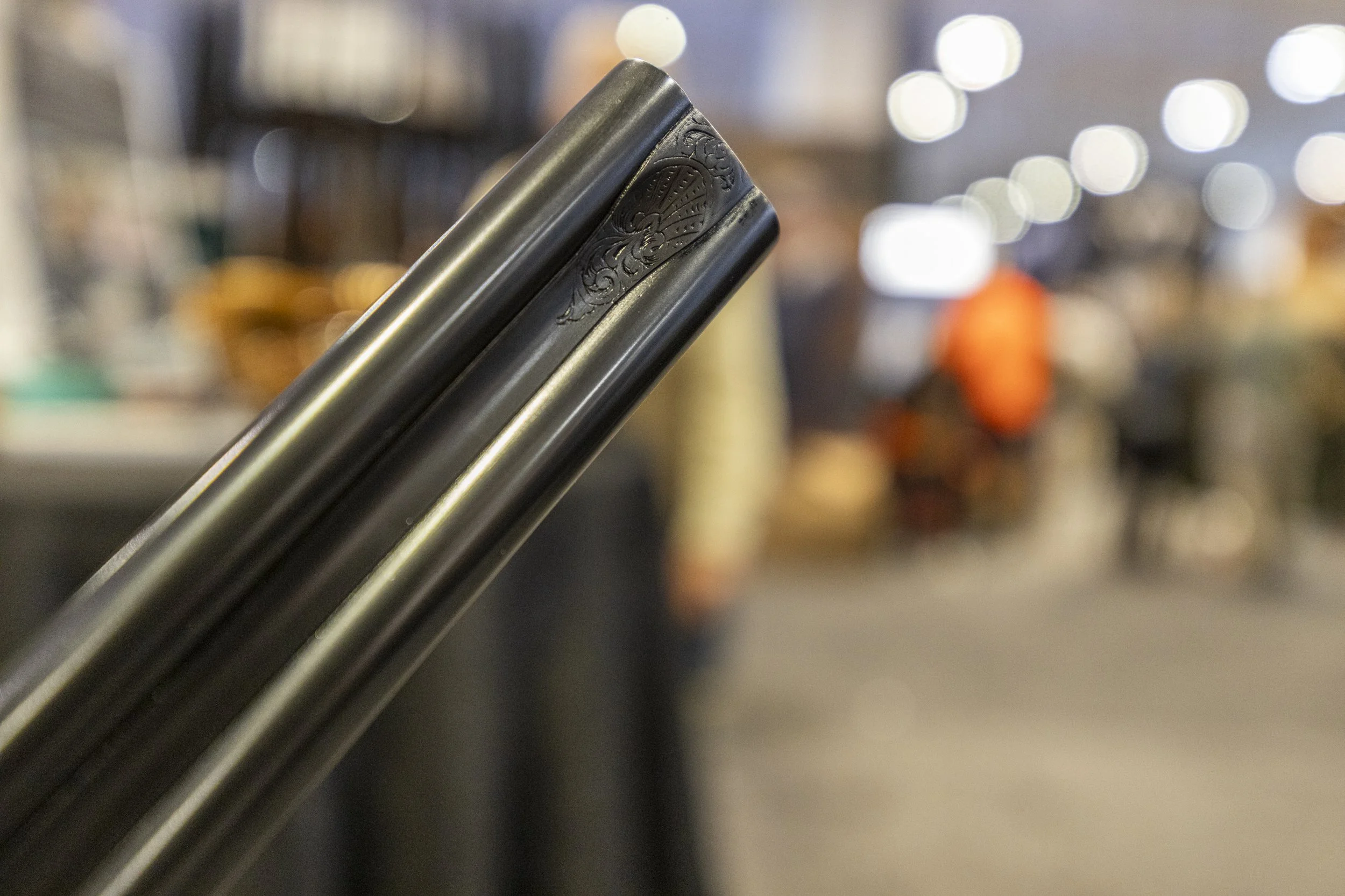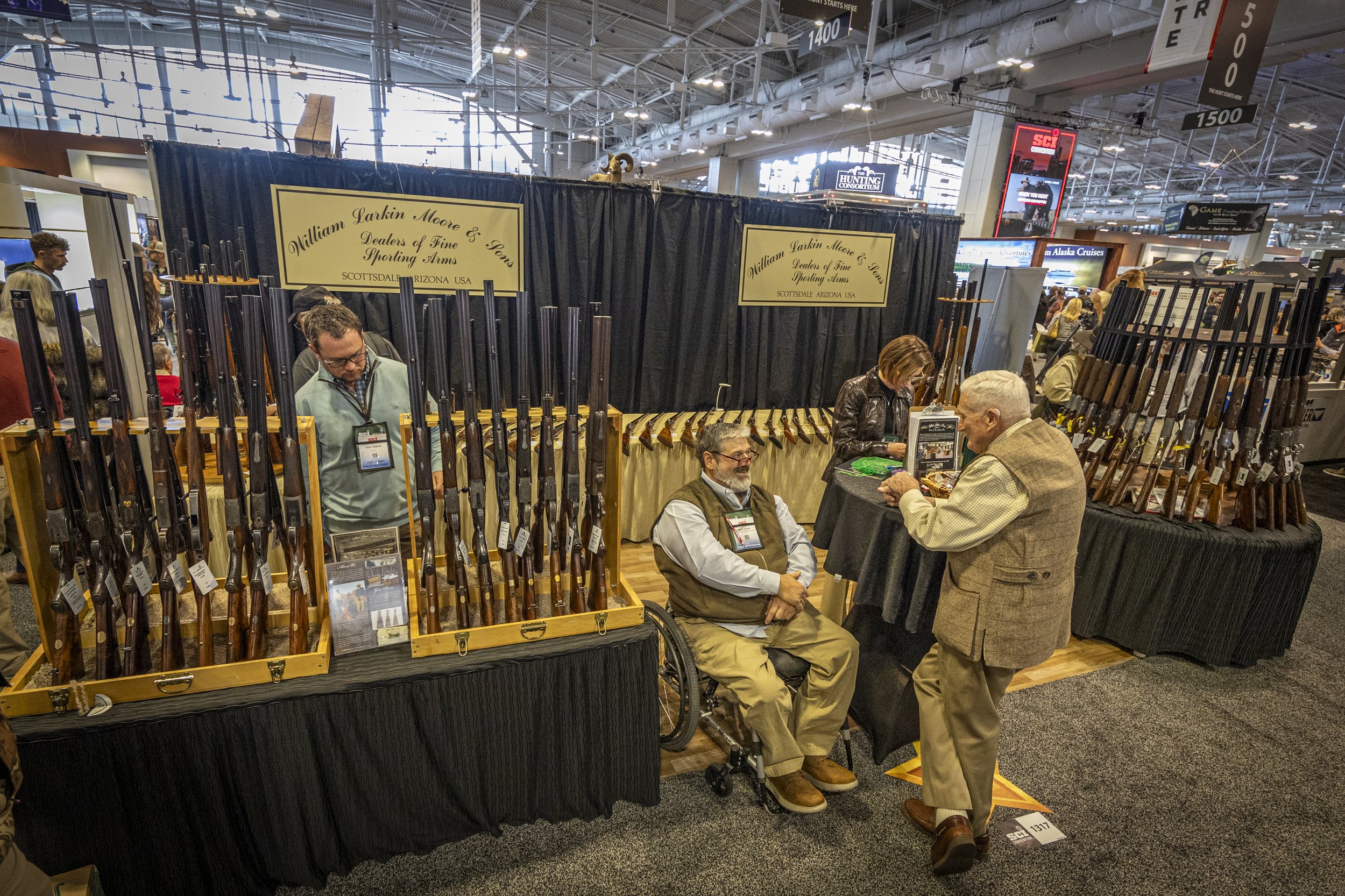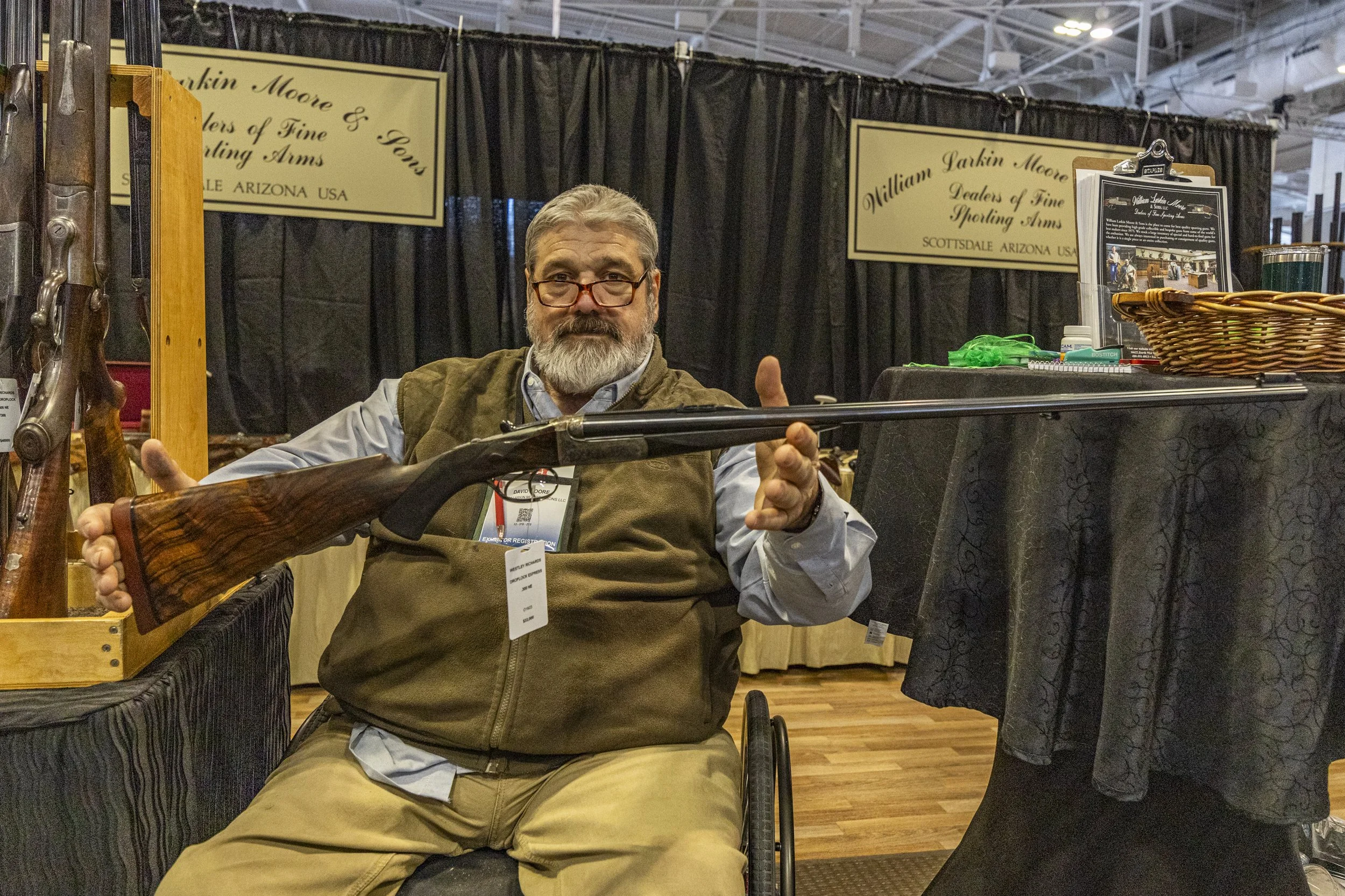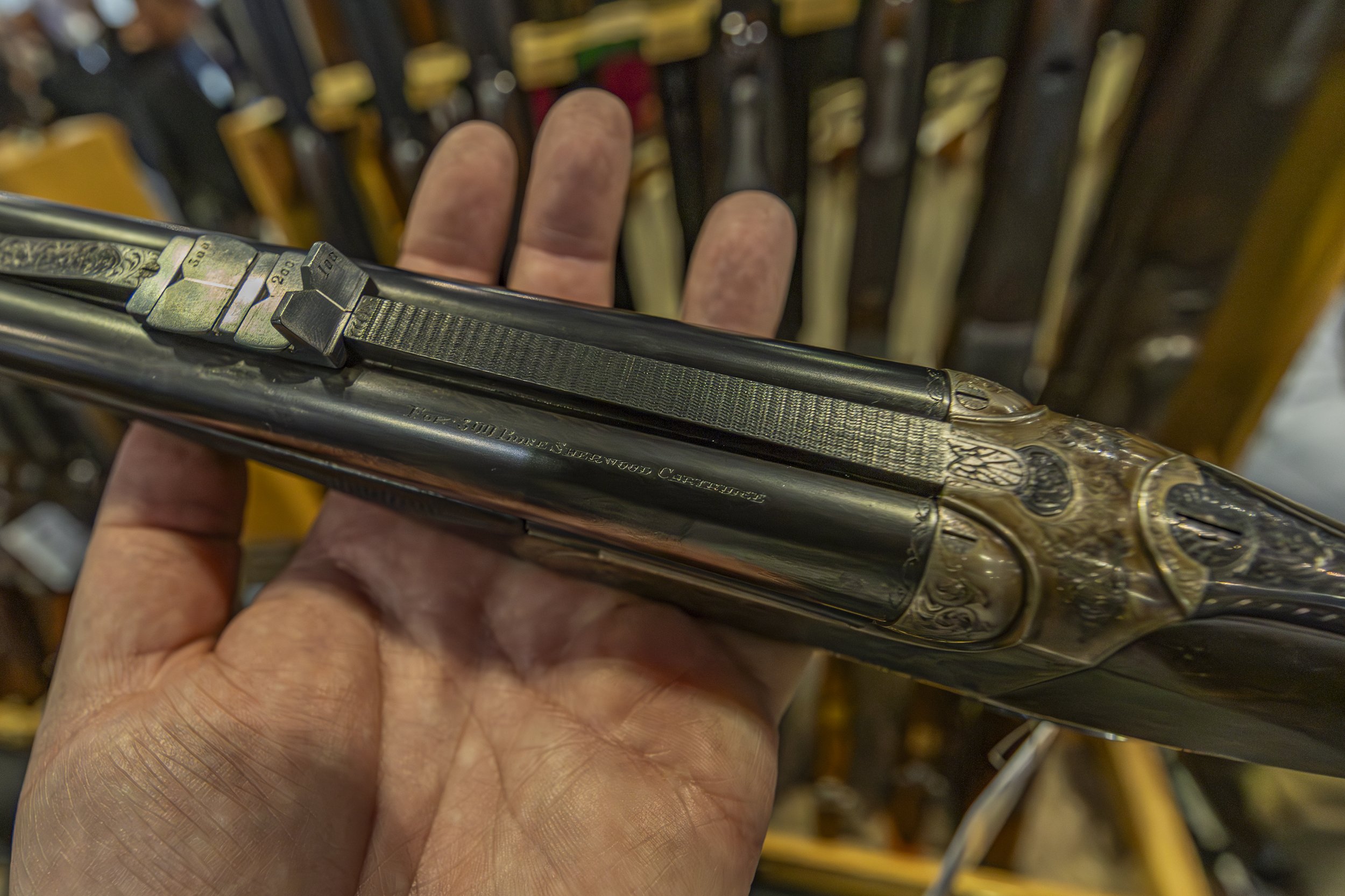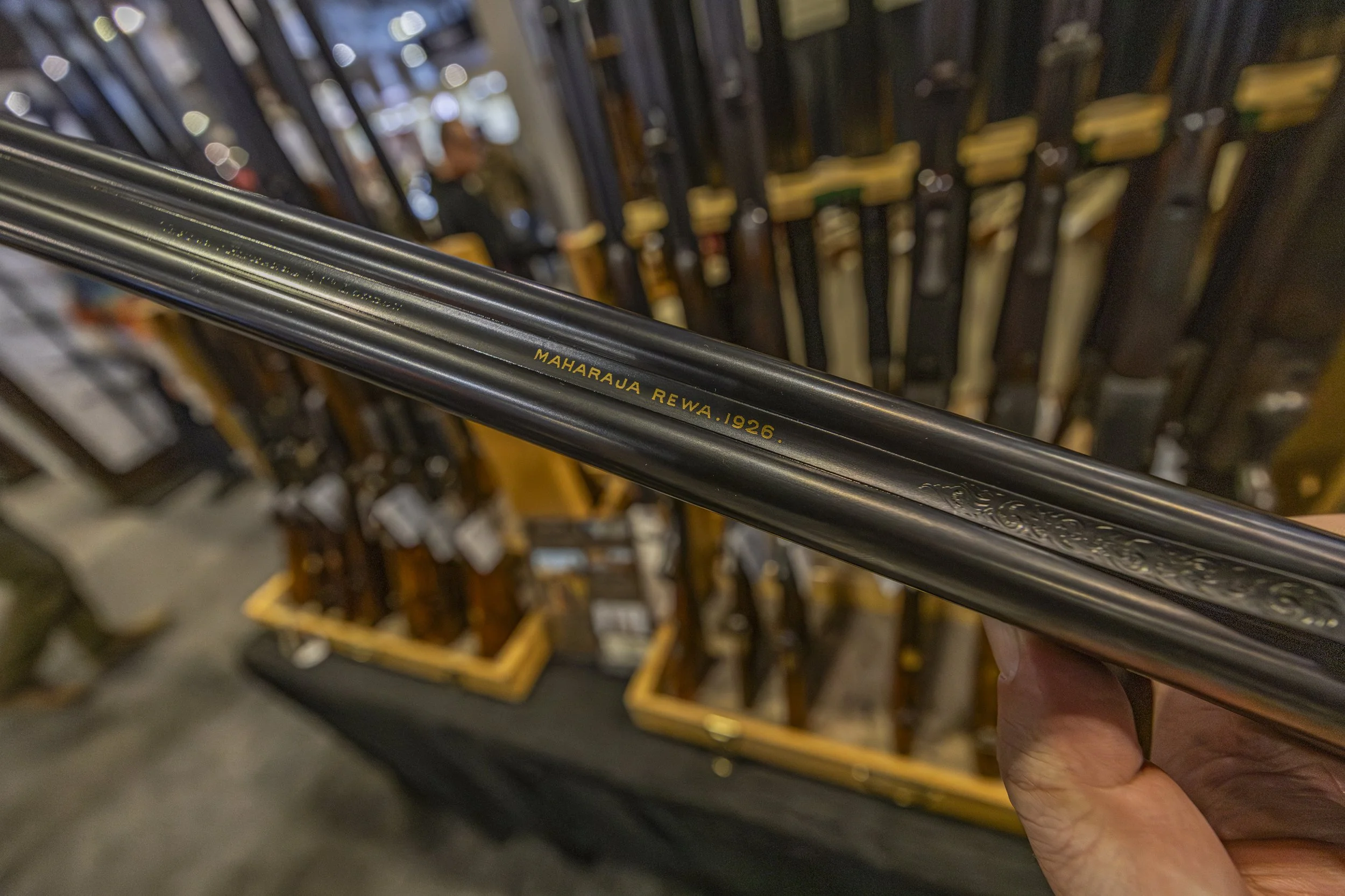Rifle of a Maharaja
At the 2024 Safari Club International convention in Nashville I came across something that made my head spin – a rifle of the sort I’d daydreamed of while bingeing the works of Jim Corbett. I’d find myself lost in thoughts of traversing backwoods India in the 1920s, putting a stop to some especially nasty man-eaters of the leopard and tiger variety with just such a rifle.
Coming across it on rack of similarly vintage rifles, I handled the hundred-year-old gun in admiration and failed to take any quality photos – something I kicked myself for the rest of the year as I thought about the small-bore double at random.
One of the wonderful things about going to the SCI show is the ability to put your hands on exceptional quality firearms both new and old. Most of the current mid-tier and better gun companies bring their show booths and a good number of custom makers like MG Arms, Todd Ramirez and Parkwest show off their wares as well, but also interspersed within the show are a number of purveyors of older/used fine guns.
Poking our noses where they didn’t really belong, Kevin Murphy and I found ourselves perusing the firearms at the booth of William Larkin Moore & Sons – a firm who has dealt in fine guns for more than fifty years and who brings an inventory to the show so vast and varied that it’s a bit of a sensory overload for anyone enamored with the art of the gun.
On one of the smaller, more mentally-manageable racks were double rifles with price tags from the tens of thousands to the many tens of thousands. In the mix, one stuck out to me with its small bores and just a bit of fine gold inlay. Bone charcoal color case finish on the receiver and little panels of hand engraving in all the right places. It wasn’t the fanciest gun, but it was the one that grabbed my imagination. Picking it up, I could hardly believe I was holding a rifle built for a Maharaja.
Fast forward a year and I had to visit their booth again to see if the Westley Richards was still in their keeping – and it was.
With side-by-side 30 caliber bores, I stood there and imagined the little gun might have been just the ticket for everything from sambar to tigers. Light in the hands, it still swung incredibly well and operated with a smoothness that put every one of the break-open guns in my safe to shame.
After getting home and doing my research into the 300 Sherwood, I quickly realized I wouldn’t want to be the one trying to use it to take the king of the Asian jungle. With a 140 grain bullet trundling along at an anaemic 1400 fps and piddly 610 ft/lbs of energy, it might just get you ‘et.
In reality, I might place a money bet that the rifle was a target/range gun, meant to drill double gun handling and mechanics and reduce the odds of fumbling in the field. I know if it were me, I’d want to practice plenty before finding myself in the tall grass with an angry cat laying in wait.
Regardless, the rifle itself is a work of art. The tasteful but not overbearing engraving might also support its purpose as a training rifle, though the thing that drew me in is the name of the princedom it was crafted for and inlaid in gold between the barrels – Maharaja Rewa, 1926.

